Quick Photos from Nepal Trip
(By Tsem Rinpoche)
Our group just arrived back to Malaysia from a successful spiritual trip from Nepal today Saturday, June 4, 2011. Everyone felt the trip was too short and the time sped by too fast..hehe..Nepal will do that to you..it’s a very exciting place to be…. They visited many holy places, made offerings, did powerful aspirational prayers, did dhana for sangha and visited wonderful spiritual people. Caught up with friends, gave gifts, received gifts and shared updates. Our group stayed in Tsem Ladrang (my residence) in Kathmandu. I was told they loved Tsem Ladrang up in the hills of Kathmandu, green, cooling and spectacular views of Kathmandu city….I am happy they can stay in the Ladrang in Kathmandu. I welcomed them very much.
Here’s some quick nice pictures….I am sure our group will post up alot more….
I am very happy for them and welcome them back. Glad it was a safe and powerful trip planting seeds of enlightenment in their minds.

Our pilgrims at the holy stupa in Bodhananth (Kathmandu) where hundreds of thousands of Buddhists visit per year to make prayers. This stupa contains the relics of Lord Shakyamuni Buddha. Very sacred spot.

At the cave where Guru Rinpoche meditated before Guru Rinpoche went to Tibet…very holy spot.

Walking up to Bijyaswari Vajra Yogini’s chapel…this chapel has all four forms of Vajra Yogini.

Top of the stairs. Entrance to Vy chapel in Bijyaswari which is 20 mins taxi from Thamel (downtown Kathmandu). Remember there are four very sacred chapels/temple of Vajra Yogini in the Kathamndu Valley, they are: Bijyaswari, Sangku, Patan, Parphing. These are must go Vajra Yogini Chapels.
Bijyaswari or Vijyaswari is 20 mins by Taxi from Thamel (centre of Kathmandu town).
Sangku is around one hour away from Thamel and then a half hour walk up the mountains to the very nice temple.
Patan is 45 mins by Taxi from Thamel.
Parphing is 1.5 hours from Thamel…it all depends on traffic also. But everyone must visit these four Vajra Yogini temples..they all close around 5pm and some 6pm..so must go up early..early morning is best..cooling and breezy.
If you absolutely have no time and really have a squeezed schedule..then GO TO BIJYASWARI VAJRA YOGINI CHAPEL…The locals call it Bijyaswari Yogini Mandir…Most taxis in Kathmandu know that…Bijyaswari is half way to Swayambunath area.
Click here for the book published by Kechara Media & Publications about Vajra Yogini and other Sacred Power Places in Nepal.

Lucky William with his offerings ready to enter the inner sanctum to meet the Diamond Lady Herself-Vajra Yogini

Sacred Bijyaswari Vajra Yogini Chapel

In front of the Vajra Yogini Temple where all four of Her forms resides. Some temples only have one or two forms, this particular one has all four. I have taken many to this place to create affinity with Vajra Yogini. I am most excited to see our people here. Excellent!!

The offerings our people prepared for offering to Vajra Yogini. Very auspicious. Never meet a holy Statue or holy sangha empty handed. Always make offerings from your heart. It is a wonderful opportunity to create merits for one’s spiritual practice.

Making prayers in front of the Vajra Yogini temple before entering the premises where photographs are not allowed

At the doorway of the Bijyaswari Vajra Yogini Temple with offerings in hand…lovely. So much good merits and good fortune to be able to do this.

Mahabodhi Temple in Patan that houses the holy sacred ‘Flying’ Vajra Yogini

Sacred Vajra Yogini in the ‘Flying Over Samsara’ stance within the sacred Mahabodhi Temple in Patan, Nepal. They usually do not let you take photos, but our group obtained special permission from the caretaker. Maybe because our group has powerful connection to Vajra Yogini and by the power of this affinity, the rules were relaxed to snap this sacred photo.
Click here for more beautiful and sacred pictures of the Flying Vajra Yogini in Patan.

Beautiful painting over the door to the Temple of sacred Vajra Yogini…She is in Her ‘flying over suffering and samsara’ form…..Vajra Yogini has been worshipped throughout Nepal for nearly a thousand years now….She blesses all those who wish to use their passions, attachments, and desires to benefit others. She teaches us to use the delusions on the path to full liberation which is appropriate for Kali Yuga, the age of materialism.

Back on the tourist van….even stars like Bryan Ho have to catch 40 winks…but always with the shades on please…just more glam..Pilgrims can be glamorous also…

Our group in front of the sacred Avalokitesvara (Chenresik) Chapel

Avalokitesvara chapel

Very sacred Avalokitesvara within the Chapel….Our group is very lucky to make offerings and have audience here

On the way to the Chapels, James kindly blesses a dog with prayers, mantras, etc…the dog was very sick…Let’s hope he gets well…poor thing.

Su Ming meeting up with our good friend Mr Raju….Nice gentleman

Strolling around and not finding anything to buy…But beautiful sights…I mean why carry shopping items back to Kuala Lumpur when you have purchased everything in Kechara Paradise already..hehehe

Yes, we have a Kechara Lounge set up in Kathmandu (Bodha-right next to stupa)…beautiful place to visit

Entering Kechara Lounge

Inside Kechara Lounge is sacred Vajra Yogini. She is five feet in height and ornamented in a traditional manner. Anyone who enters Kechara Lounge will be blessed by Her.

Kechara Lounge in Bodha….nice cafe upstairs also…has view of stupa while you are dining

Kechara Lounge from the outside..Su Ming is in charge of this division of Kechara in Nepal.

Looking out the window from Kechara Lounge

Yes this is THE VIEW from Kechara Lounge…the holy Bodha stupa containing the relics of Shakyamuni Buddha.

People prostrating and doing prayers in front of the Bodha Stupa.

Thousands of people circumambulate around the holy stupa daily.
Scenes of holy Nepal….

Outside Sacred White Tara temple….HH Kyabje Trijang Rinpoche highly recommended all to visit this particular White Tara. This image here is very blessed

White Tara in the centre…..must visit.

The area where sacred Naropa’s cave is

Doing prayers outside Naropa’s cave

Our lucky group inside the VERY CAVE NAROPA MEDITATED IN…it’s here where he had authentic visions of Lady Vajra Yogini..She Herself initiated Naropa who meditated here for years….It is here where Naropa then gave Her initiation to Nepalese disciples (Pamtingpa brothers). The Nepalese brothers practiced, gained attainments and then in turn initiated the Tibetan disciples and then Vajra Yogini’s tantra was brought to Tibet. From Tibet to the world….and soon Malaysia!!! This is such a sacred spot…must visit and make offerings…everyone must visit
Click here for more pictures and a writeup about me doing pujas by Naropa Cave.

Vajra Yogini chapel in Parphing

Downtown Kathmandu!!

Lunch with good friend Elizabeth of Pilgrims bookstore..the biggest and nicest bookstore in Kathmandu..It has been there for decades and I love it…I always go…or send friends there…

This is Elizabeth of Pilgrims bookstore…She is a very intelligent and hardworking girl…I’ve got a entertaining story to tell you. I have been going into Pilgrims bookstore for over a decade..but never really spoke to Elizabeth… But a few years back I wanted a thangka they had for a Charity dinner. The thangka was going to be used for auctioning for our Kechara dinner. I told Elizabeth and we debated on the price for half and hour..hehehe,. During our debate we got to know eachother better and talked about other things…and that is how we became friends. Recently our group of eight met her and she presented gifts to everyone. She also sent a thangka gift to me with a very sweet card thru Su Ming. Thank you Elizabeth for your beautiful gift… She mentioned in the card, she never forgot the thangka incident…sweet. I do like her as she is very quick person…I am glad Pilgrims bookstore and all of us our friends. I am glad to know Elizabeth.

Lunch at KGH…one of our favorite hangouts for breakfast and lunch in Kathmandu….KGH stands for Kathmandu Guest House..Very nice Buddha Garden and great to sit outdoors for breakfast.

Susan is a nice lady and friend who is part of the family that owns Kathmandu Guest house and we always meet her when our group is in Kathmandu…

Vegetarian lunch at KGH is delicious…can see…Ethan (white shirt) looks like a model on lunch break from a photo shoot.

Gentle Lew of E-division making friends with someone who kept gently pawing him for attention…sweet..

Cynthia of E-division couldn’t find a thing she liked that we didn’t have in Kechara Paradise here in Kuala Lumpur already…hehehe

Oh….looks like a ‘gang’…hehehe…YOU DON’T WANT TO MESS WITH THEM ON THIS KATHMANDU BUS…They’re not in the mood….hehehe

These are the staff that work in Tsem Ladrang Nepal. Su Ming and Raj Kumar on behalf of myself are giving them supplies of rice, lentils, oil, cleaning items, teas, soap, shampoo, grains, flour, etc..I always give them food gifts as they come from very simple backgrounds and work hard. The elder lady Sabina shed tears I was told upon recieving these items….

Tsem Ladrang

Tsem Ladrang grounds

Tsem Ladrang Kathmandu has beautiful green lawn and trees. I love it.

Tsem Ladrang from the front view as you enter.

Our very super cute and nice dog at Kathmandu Tsem ladrang…her name is Doggie….She is very friendly…very sweet. Everyone loves her.

Our group inside the sitting room of Tsem Ladrang Kathmandu….All are text messaging as James said, very Kechara style…busy..busy…busy…
This is our butterlamp house which is a seperate building on the same property. We offer thousands of butterlamps per day to Vajra Yogini. The butterlamp house is dedicated to Vajra Yogini. Butterlamps are offered all year round for whomever engages in this great practice…Many people have sponsored the offerings of 100,000 butterlamps in a year. Some do all, some partial as per ones budget of course… It’s inconvenient for us to do it here, so we can do it in Nepal.
Offerings butterlamps or light to Vajra Yogini increase clarity, understanding of dharma, great preparation for death, great for life too, affinity with Her special practices, causes to accomplish Her 11 Yogas, the causes to gain seven types of wisdom, causes for wealth and attainments. It is powerful for purifications also. If we have done actions in our life that we regret, butterlamps are helpful for purifications. When it is offered for us there, which is daily but will take a few months, everyday we do our prayers/dedications to Vajra Yogini here from our homes. It is a wonderful practice. Everyone should do 100,000 butterlamp offering as one of our ‘preliminary practices.’ I highly recommend the offering of lights to Vajra Yogini. I highly recommend any offerings to sacred Vajra Yogini, the most powerful Being in the Universe.
We have people to clean, wash, prepare, and offer the lamps on our behalf. Our people there really love this job as they have faith in Vajra Yogini also….It takes 6-8 hours a day to prepare all the lamps. So when we sponsor the ghee, wick and cleaning, then our wonderful staff will make offerings to Vajra Yogini everyday for us till we reach 100,000 butterlamps. For more information please contact Jp, Su Ming or Beng Kooi. Our Ladrang people have worked very hard and set up the Tsem Ladrang in Kathmandu to benefit people in many ways…Wonderful.. I thank them.
I was very fortunate, I have had 100,000 butterlamps done on my behalf two years ago…I was very happy about that..I wish to do it yearly when I can… I want to do again many times when my budget allows.
Please click here for more information, pictures and videos of Vajra Yogini
Click here to see the photo album of me bringing 61 pilgrims from Kechara to Nepal in 2008 to visit the holy power places in Kathmandu valley.
For more interesting information:
- Nepal Pilgrimage full videos
- Photo Album: Sacred Sites in Nepal
- Pokhara Stupa
- It’s in the scriptures they exist
- Yeti Exhibition in Pokhara, Nepal
- Japanese Mountain Climbers Say They Found Yeti Footprints
- Sasquatch (Bigfoot)!!!
- Nepal is the land of spirtuality, beauty and Mystery
- Philip describes his recent trip to Nepal!!
- Look at this picture!!!
- Great Articles in GOING PLACES on Kathmandu
- Aerial view of Bodha Stupa
- Puja at Naropa’s Cave, Kathmandu, Nepal
- Jan’s a Hero~Saving beings~Kathmandu Nepal!
- Making Nepali Momos
- My Dream House in Nepal Mountains
- The birth palace of Gautam Buddha
Please support us so that we can continue to bring you more Dharma:
If you are in the United States, please note that your offerings and contributions are tax deductible. ~ the tsemrinpoche.com blog team



































































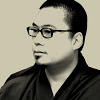




































































































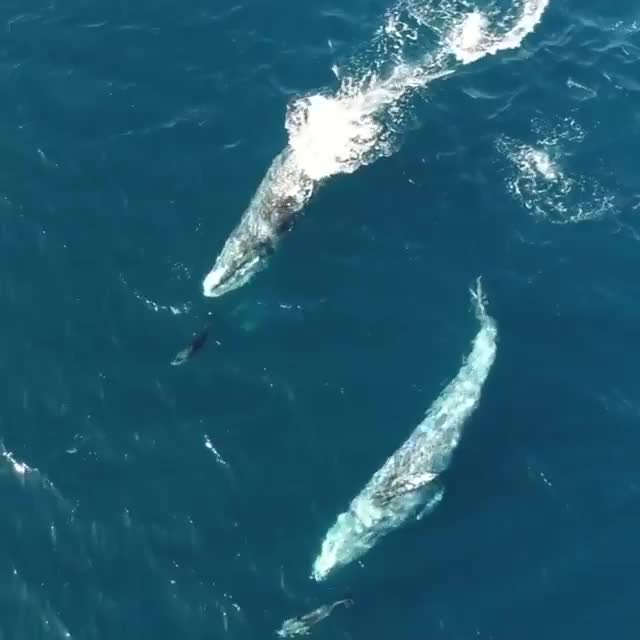

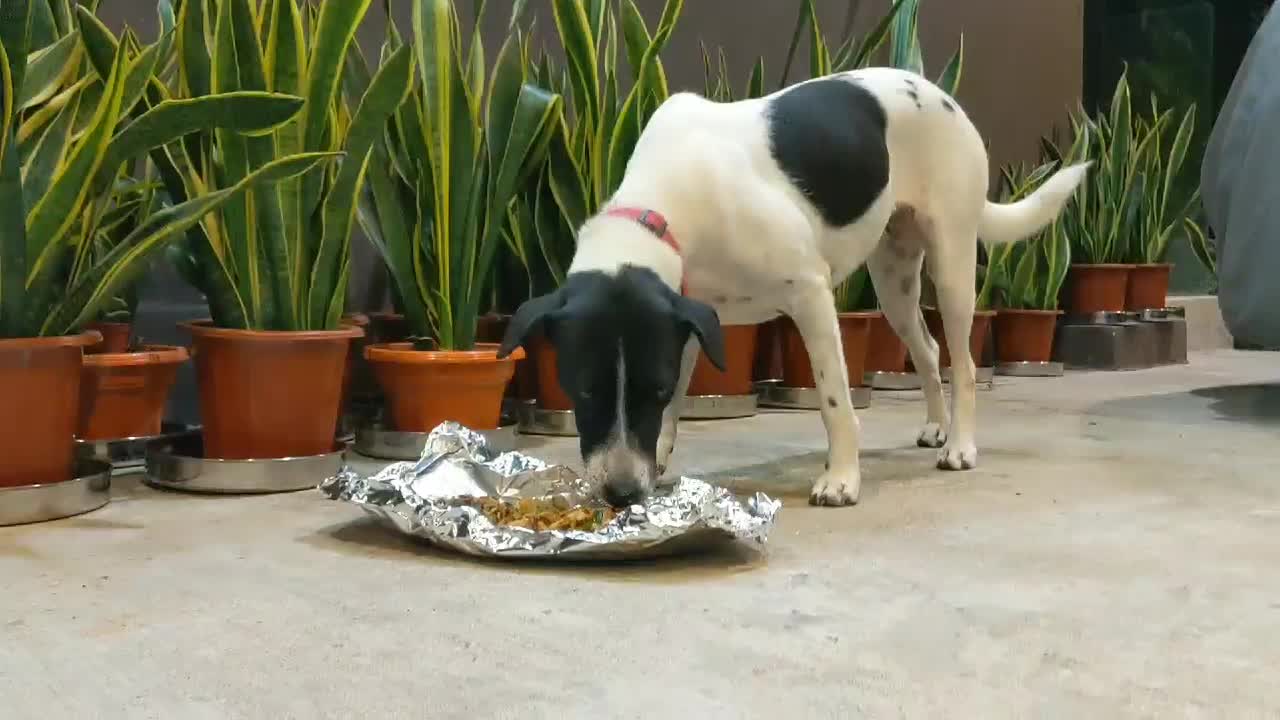
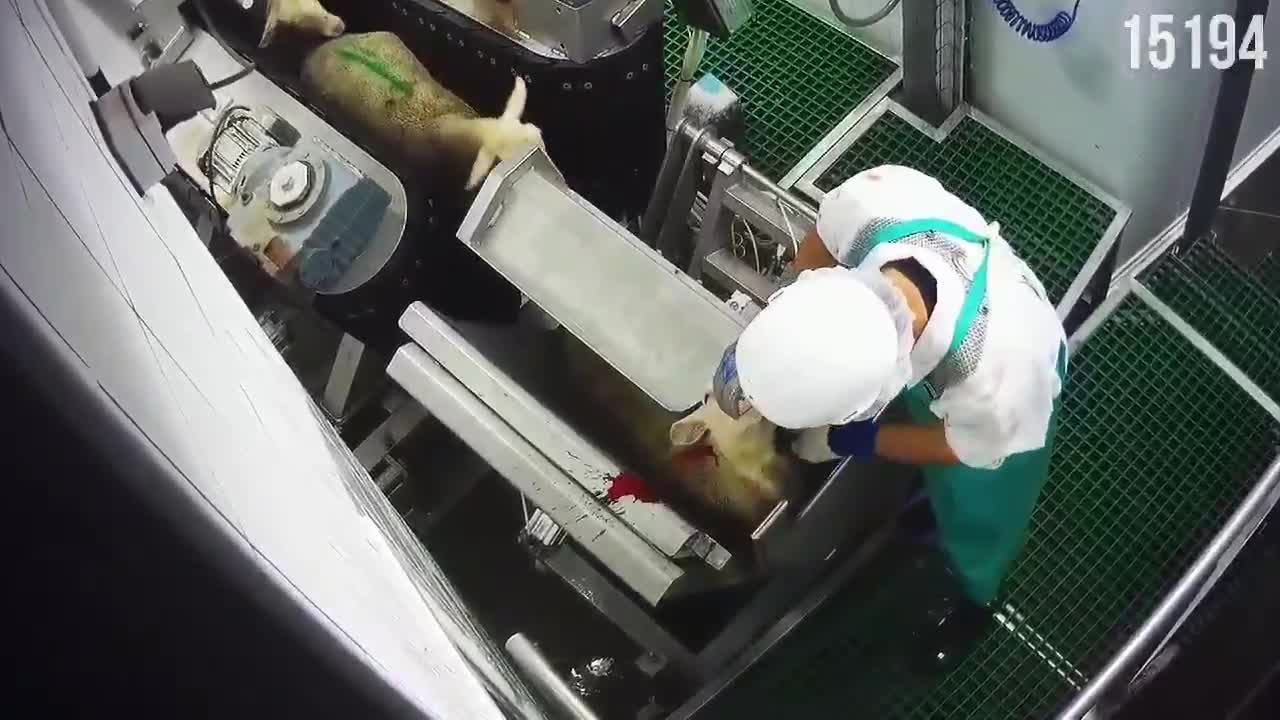

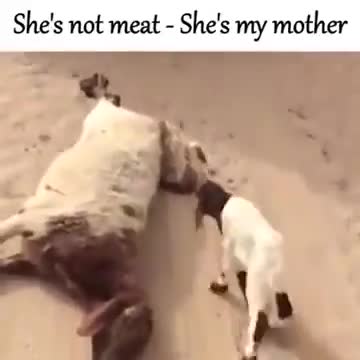
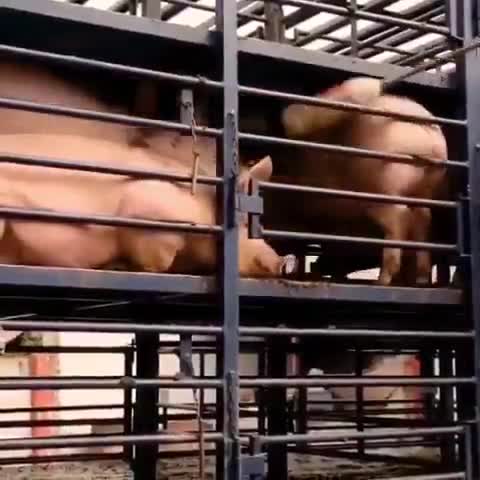

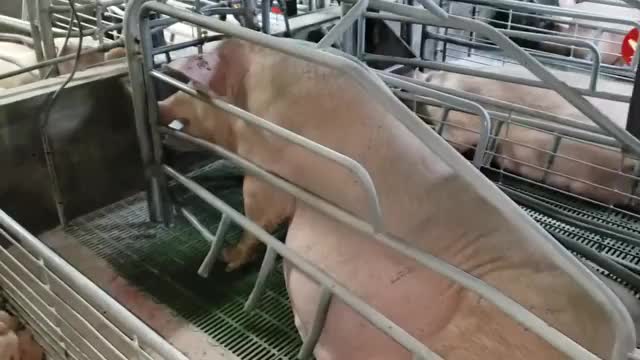
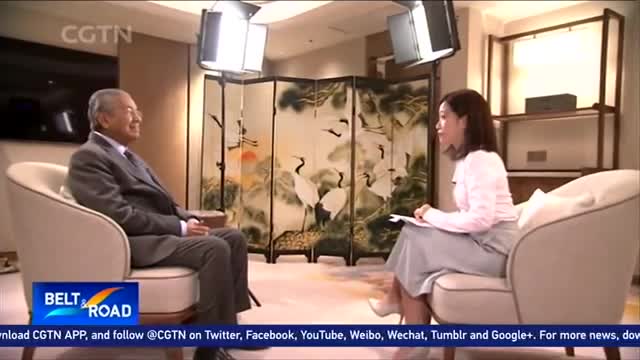
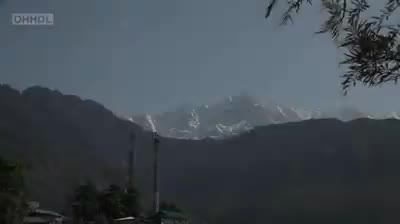
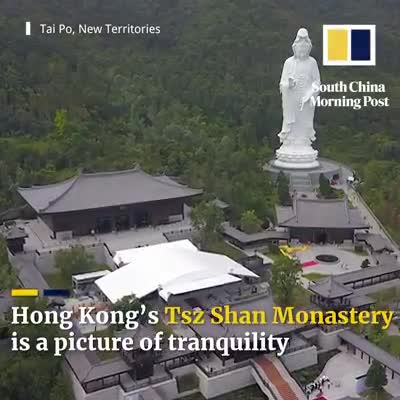

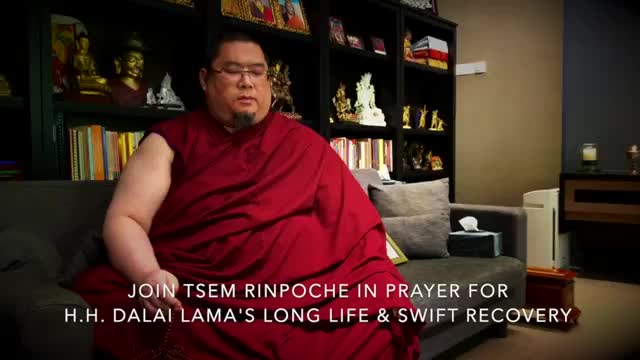
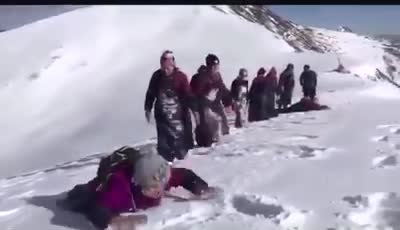
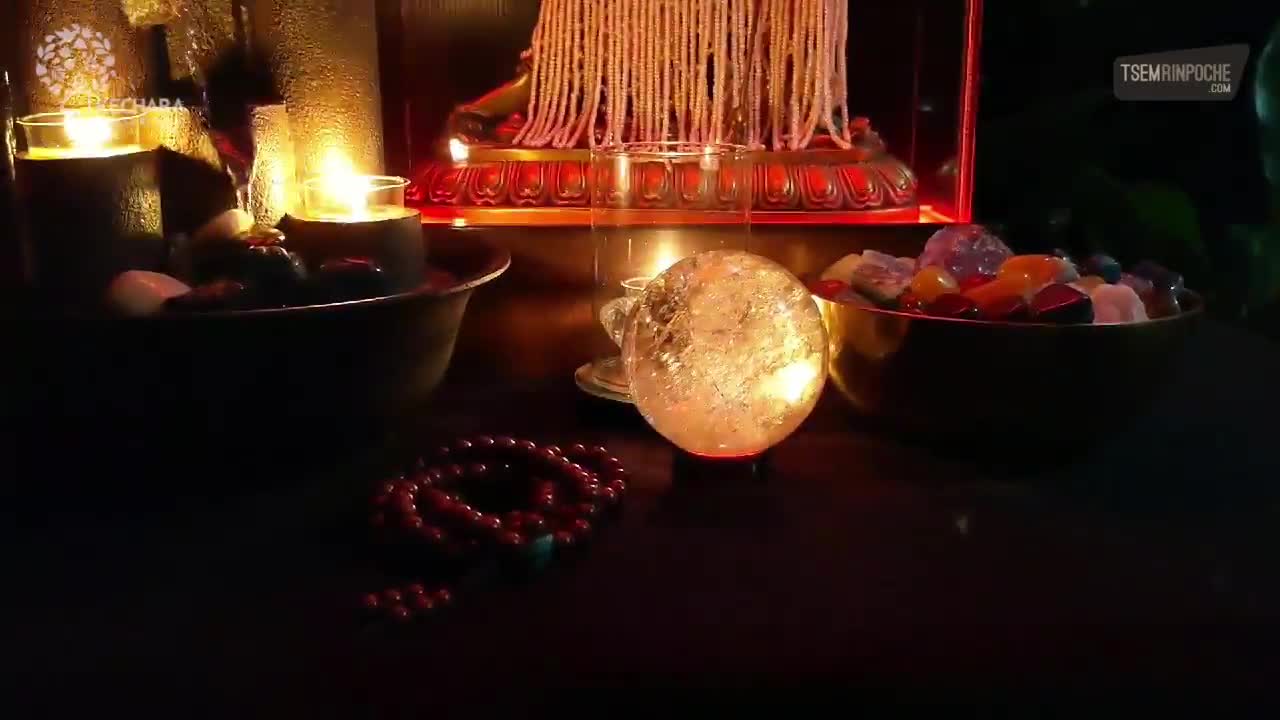

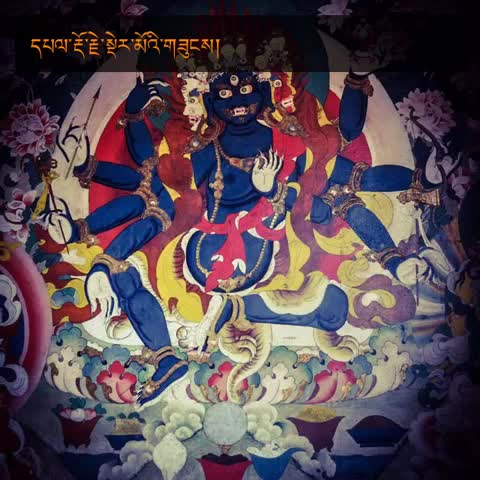
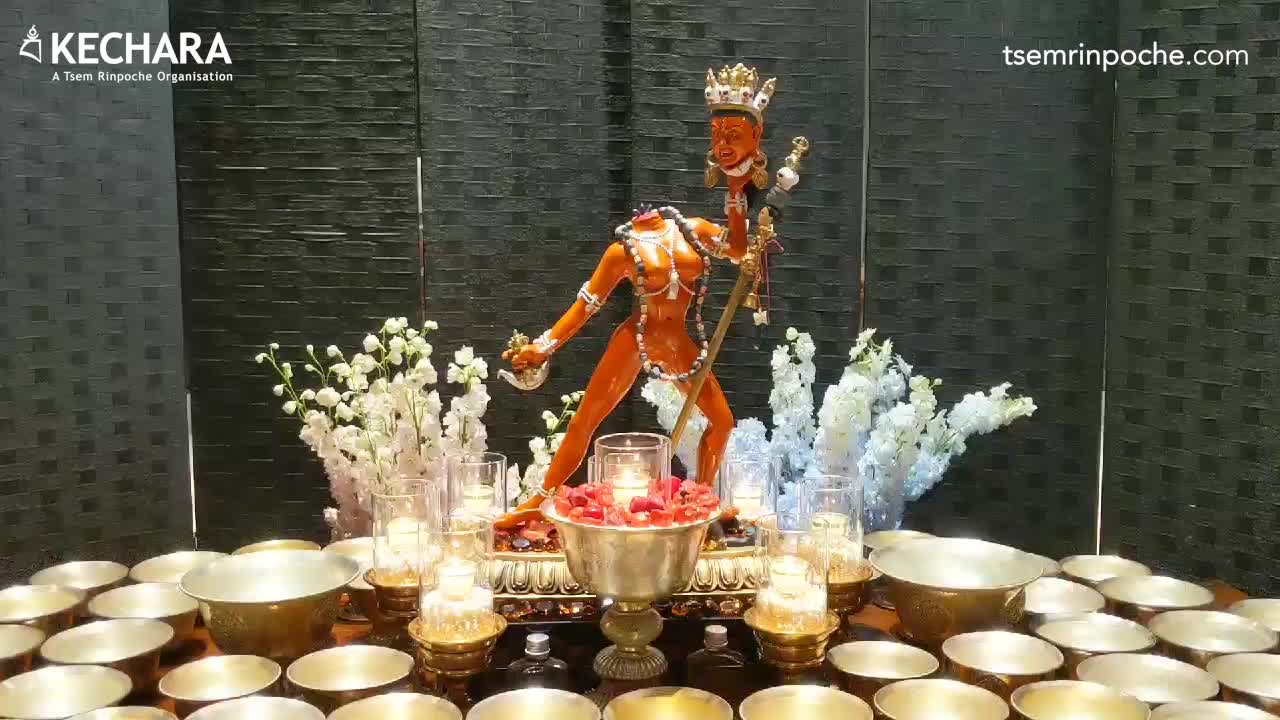





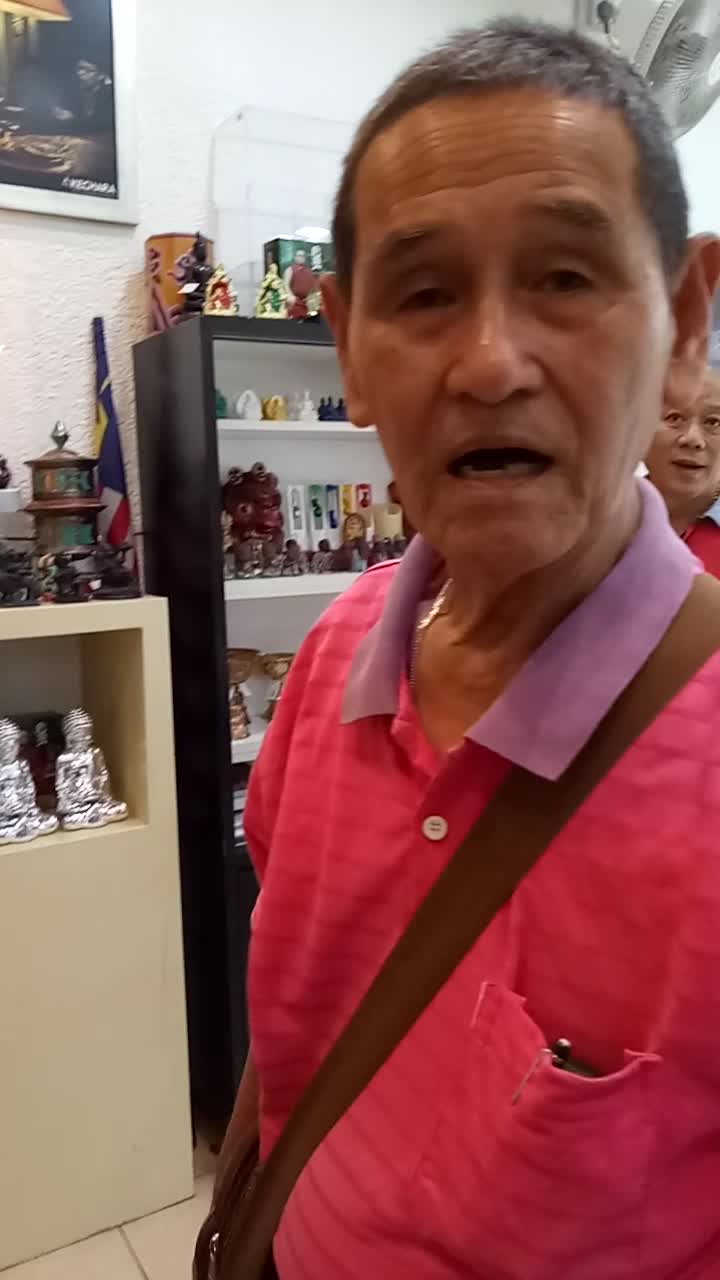







































































A sacred image of the rare form of Vajrayogini known as Ucheyma, the Buddha that shows us the path to eradicate the ego. For this and many other high-resolution images of the enlightened beings to download for free visit: https://bit.ly/2oxb4qU
Ucheyma (Severed Headed Vajrayogini) (Main figure)
(Top to bottom): H.H. the 7th Panchen Lama, Ucheyma (Severed Headed Vajrayogini), Vajra Varnani (green assistant), Vajra Vairocani (yellow assistant), Dorje Shugden and Citipati.
The central deity is known as Chinnamasta or Dorje Neljorma Ucheyma. Both Chinnamasta (Sanskrit) and Ucheyma (Tibetan) literally mean, ‘She Whose Head is Severed’. The meaning behind her form is to show practitioners that they need to completely remove the grasping and self-identification with the “I” or the ego. Generally, the identity of the self is strongly associated with our face more than any other part of our body. We usually recognise a person when we look at a person’s face. Hence, our self-identification or ego is strongly associated with our face. To show us that this self-identification needs to be overcome on the spiritual path to enlightenment, Vajrayogini uses her ritual chopper to decapitate herself. This is symbolic of her practice eradicating the ego.
The Severed Headed Vajrayogini, as she is also known, removes all afflictive mental constructs by removing the root cause – the identification of the self, the ego. We are either attached to or averse to people and circumstances because we have an ego to please, gratify and protect. But in the grander scheme of things, this self-identification with the ‘I’ is illusory and does not really exist. Therefore, Vajrayogini reveals this ultimate truth through the dramatic decapitation of her head and at the same time is still able to live and function. She is able to live due to her direct perception of emptiness and egolessness.
Contrary to what some people might think, the eradication of the self does not destroy individualism, our personality or make us into a mindless person. In fact, the eradication of the ego makes us become a vibrant and compassionate person, someone that has greater awareness of the suffering of others. In other words, we become much warmer, kinder, forgiving, tolerant, conscientious, generous, contemplative and we are become a joy to be with. The cutting of the ego or the ‘I’ brings us towards awakening our true self, the Buddha nature within.
The Severed Headed Vajrayogini has two dakini attendants. From the trunk of her neck, there are three severed blood vessels spurting three jets of blood that flow into the mouths of her own decapitated head that she carries in her left hand and into the mouths of her two attendants. Tsem Rinpoche explained that the three jets of blood represent that her practice purifies the three psychic poisons of ignorance, hatred and desire. In turn, this leads to the attainment of the three bodies of a Buddha – the emanation body, the enjoyment body and the truth body. In other words, the severance of the ego via her tantric path leads to the purification of all delusions and ultimately, the attainment of Buddhahood itself.
The 7th Panchen Lama, Palden Tenpai Nyima is featured floating above because of his compilation of sadhanas from the ancient Sadhanamala texts. This includes a particular sadhana or collection of prayers, visualisation and mantra focused on Ucheyma. Incidentally, Dorje Shugden in many of his previous lives was a lineage master of the Vajrayogini tantras as well. These previous lives include the likes of the Mahasiddha Naropa and Tsarchen Losel Gyatso. The Lord and Lady of the Charnel Ground, known as Citipati, are one of the main protectors of the Vajrayogini Tantra.
Last of all, the ascetic meditator engaging in his devotional practices towards Ucheyma in the cemetery represents the ideal environment for tantric practice because such environments invoke deep renunciation towards worldly affairs and attachments. All Buddhist traditions advocate meditating on the bones of the deceased because it reminds us of our mortality and hence, we develop revulsion towards the transient nature of worldly or ordinary existence.
More free downloads: https://bit.ly/2oxb4qU
Read more about Vajrayogini: https://bit.ly/2iVLCuG
Ucheyma (Severed Headed Vajrayogini) (Main figure)
(Top to bottom): Maitri Kacho (Flying Vajrayogini), Maitri Kacho (One-Leg Up Vajrayogini), Naro Kacho, Sukhasiddhi, Ucheyma (Severed Headed Vajrayogini), Vajra Varnani (green assistant), Vajra Vairocani (yellow assistant), Citipati, Vajravarahi and Dorje Shugden.
The central deity is known as Severed Headed Vajrayogini, Chinnamasta or Dorje Neljorma Ucheyma. Both Chinnamasta (Sanskrit) and Ucheyma (Tibetan) literally mean, ‘She Whose Head is Severed’. The meaning behind her form is to show practitioners that they need to completely remove the grasping and self-identification with the “I” or the ego. Generally, the identity of the self is strongly associated with our face more than any other part of our body. We usually recognise a person when we look at a person’s face. Hence, our self-identification or ego is strongly associated with our face. To show us that this self-identification needs to be overcome on the spiritual path to enlightenment, Vajrayogini uses her ritual chopper to decapitate herself. This is symbolic of her practice eradicating the ego.
The Severed Headed Vajrayogini removes all afflictive mental constructs by removing the root cause – the identification of the self, the ego. We are either attached to or averse to people and circumstances because we have an ego to please, gratify and protect. But in the grander scheme of things, this self-identification with the ‘I’ is illusory and does not really exist. Therefore, Vajrayogini reveals this ultimate truth through the dramatic decapitation of her head and at the same time is still able to live and function. She is able to live due to her direct perception of emptiness and egolessness.
Contrary to what some people might think, the eradication of the self does not destroy individualism, our personality or make us into a mindless person. In fact, the eradication of the ego makes us become a vibrant and compassionate person, someone that has greater awareness of the suffering of others. In other words, we become much warmer, kinder, forgiving, tolerant, conscientious, generous, contemplative and we are become a joy to be with. The cutting of the ego or the ‘I’ brings us towards awakening our true self, the Buddha nature within.
The Severed Headed Vajrayogini has two dakini attendants. From the trunk of her neck, there are three severed blood vessels spurting three jets of blood that flow into the mouths of her own decapitated head that she carries in her left hand and into the mouths of her two attendants. Tsem Rinpoche explained that the three jets of blood represent that her practice purifies the three psychic poisons of ignorance, hatred and desire. In turn, this leads to the attainment of the three bodies of a Buddha – the emanation body, the enjoyment body and the truth body. In other words, the severance of the ego via her tantric path leads to the purification of all delusions and ultimately, the attainment of Buddhahood itself.
Severed Headed Vajrayogini is surrounded by some of her other forms, including Naro Kacho, two forms of Maitri Kacho, Sukhasiddhi and Vajravarahi. These forms of Vajrayogini are more commonly practised compared to Severed Headed Vajrayogini and are prevalent in most Tibetan Buddhist lineages. Though they may look different, all forms are indivisible from her true nature and all her practices can lead practitioners to enlightenment. Naro Kacho arose from a vision beheld by the Mahasiddha Naropa, Maitri Kacho from a vision beheld by Maitripa, and Indra Kacho from a vision beheld by Indrabodhi. The Lord and Lady of the Charnel Ground, known as Citipati, are one of the main protectors of the Vajrayogini Tantra.
Last of all, Dorje Shugden is a protector with special affinity with Vajrayogini practitioners because he arose from an incarnation lineage that includes Naropa and Tsarchen Losel Gyatso who practised and proliferated her Tantra.
More free downloads: https://bit.ly/2oxb4qU
Read more about Vajrayogini: https://bit.ly/2iVLCuG
Vajrayogini (Main figure)
(Top to bottom): Naropa, Vajradharma, Hero Vajradharma, Naro Kacho, Maitri Kacho (Flying Vajrayogini), Dorje Shugden and Vajravarahi.
Vajrayogini is a female tantric Buddha and she has many forms that are derived from various lineages. She mainly embodies the fully enlightened female (shakti) aspect of a Buddha. She belongs to the Mother Tantra classification, which refers to her practice concentrating on the wisdom aspect of the path to Buddhahood. She is also the principal dakini, the compassionate female guides and nurturers of tantric meditation who lead practitioners to enlightenment. In the thangka, the main figure in the middle is Naro Kechari as she arose from the pure vision of the Mahasiddha Naropa.
In Anuttara (Highest) Yoga Tantra, principal dakinis normally appear in union with a male consort and this can be seen in the cases of deities such as Guhyasamaja, Hevajra, and Kalachakra. In the case of Vajrayogini, she is the principal female Buddha of the Chakrasamvara Tantra and therefore, she is normally in union with Heruka Chakrasamvara. Furthermore, Vajrayogini is also considered a Vajradakini, who are yidams or meditational deities in their own right. Their practices have evolved from the main practices of their consorts, simplifying the otherwise complicated original practice by reducing it to a single-deity meditation without sacrificing the main benefits and features of the original. Hence, Vajradakini practices such as Vajrayogini and Nairatmya are derived from the original Chakrasamvara Tantra and Hevajra Tantra respectively.
In essence, Vajrayogini is known as “Sarvabuddha-dakini” or the Dakini Who is the Essence of all Buddhas. Her mantra is known as the King of All Mantras as it has the most powerful ability to bless us with spiritual attainments even without any visualisation or meditation. There are 11 Yogas in the generation stage of her practice and a few which have the power of transforming ordinary actions like sleeping, waking and ordinary daily tasks into a collection of merits. Ultimately, her Tantra offers salvation for ordinary practitioners at death with her special promise of guiding practitioners towards Kechara, or the Paradise of the Dakinis, in which we can continue deep practices to become a Buddha without fear, obstacles and interruptions.
Within Vajrayogini practice, soliciting the blessings of the lama and the lineage master are of paramount importance in order for our practice to bear results. Hence, the lama is visualised as the red Vajradharma with arms crossed at the heart, holding the vajra and bell. The lineage masters are visualised as Hero Vajradharma, holding a damaru and skullcup while cradling a khatvanga. Aside from the main Naro Kechari form, Vajrayogini also appears in the form of Maitri Kechari, who is known as Flying Vajrayogini, and arose from the vision of Maitripa. Another common form is known as Indra Kechari, or Vajravarahi, who arose from the vision of Indrabodhi.
Last of all, Dorje Shugden is a Dharma protector with a special affinity with Vajrayogini practitioners. This is because he himself arose from an incarnation lineage that includes the likes of Naropa, the progenitor of Naro Kechari practice, and Tsarchen Losel Gyatso who had practised and proliferated her Tantra and is listed as one the lineage masters invoked upon every day by Vajrayogini practitioners.
More free downloads: https://bit.ly/2oxb4qU
Read more about Vajrayogini: https://bit.ly/2iVLCuG
Original illustration and text posted by Eric D Hatchell as a reply to H.E. Tsem Tulku Rinpoche’s facebook post on Vajrayogini here: http://bit.ly/VYogini0001
The Dākiṇī with the Essence of all Buddhas, Vajrayoginī
Her practice includes methods to end the otherwise repetitive states of Bardo and rebirth, by transforming the process into a journey, which may lead to full enlightenment. In preparation for which, Vajrayoginī further offers the omnipresent ability to reconstruct the nature of the most, mundane everyday experiences, such that they may reveal higher destinations, via the spiritual paths she may choose to reveal. [1] Vajrayoginī being defined as, “The Dākiṇī who is the Essence of all Buddhas”, [2] is amplified by scholar Miranda Shaw when she implied that this deity is no less than, the supreme nature of the very Tantric pantheon. No male Buddha, including her divine consort, Heruka-Cakrasaṃvara, further advances her in metaphysical implications. [3]
Vajrayoginī’s sādhanā originates from India circa 10/12th C, [4] when summoned as Heruka-Cakrasaṃvara’s Yab-Yum consort [5], with later forms including Vajrayoginī as “Solitary Hero”, she may be visualized with the deep red complexion of a 16-year-old female, whose stance is nude amidst a blazing fire of pristine awareness and most exalted wisdom. Her head is adorned with a crown of five skulls and upon her forehead, the third eye of wisdom is set vertically (represented here by an auspicious jewel). She drapes a necklace of fifty dried human skulls and is depicted with her traditional vajra-handled knife in her right hand; with a blood filled kapala in her left, she drinks with upturned head while looking above, toward the pure realm of Khechara. This seemingly gruesome gesture is actually symbolic of her clear light in great joy, known as “mahasukha” (the great bliss), [6] [7] thus the blood she drinks may be offered to us all as if a fine wine.
Resting on the left shoulder is a Katvanga staff as she stands tall with her two feet, trampling the bodies of red Kalaratri and black Bhairava (with heads bending backward), representing the embodiment of illusion and ego-awareness. The composition, all of which rests above a sun disc and multicolored lotus pedestal, she is rendered here after a thankga of Naropa Tradition (passed down from a special teaching of the Indian Mahasiddha Naropa). Vajrayoginī herself may be classified as the personification of “Wisdom” or “Mother” and her practice originates with the Chakrasamvara Cycle of Tantras, which is one of the five principal tantric practices of the Sakya School, although found in one form or another, she is included in all schools of Tibetan Buddhism. [8]
Vajrayoginī also appears in versions from the Kagyu school of Tibetan Buddhism, with one popular system having the practitioner visualize themselves as Vajrayoginī, as such, their guru taking the form of Milarepa. [9] Thus depicted above the central deity here we see Milarepa on our right, with his great Guru Marpa left (whose guru was Naropa himself, and other great Indian masters). [10]
Vajrayoginī is a simplified, single most form of the female Buddha, who is otherwise a collection of alternate forms. From her sādhanās she is visualized in English terms as “Vajra Sow”, “Wrathful Lady”, “Fierce Black One”, and other such similar manifestations of female energy found in numerous iconographic renderings and traditions. Each feature of Vajrayoginī’s visualization conveys important spiritual concept. For example, her three eyes indicate her ability to see all (past, present and future); her red-colored body symbolizes the blazing of her ”inner fire”, and the curved knife she wields, demonstrates the power to sever the delusions and obstacles of her followers and of all living beings. [11]
—–
Wordmarque Design and Photography
—–
References:
[1] Gyatso, Kelsang. Guide to Dakini Land: The Highest Yoga Tantra Practice of Buddha Vajrayogini. London: Tharpa, 1996, p.xii.
[2] “The Berzin Archives.” Bonding Practices for Mother Tantra. Accessed February 18, 2016. http://www.berzinarchives.com/…/bonding_prac_mother_tantra_….
[3] Shaw, Miranda Eberle. Buddhist Goddesses of India. Princeton: Princeton University Press, 2006, p. 8.
[4] English, Elizabeth. Vajrayoginī: Her Visualizations, Rituals & Forms: A Study of the Cult of Vajrayoginī in India. Boston: Wisdom Publications, 2002.
[5] “Vajrasattva (Buddhist Deity) – White (with Consort).” Vajrasattva (Buddhist Deity). Accessed February 18, 2016. http://www.himalayanart.org/items/77598.
[6] Gyatso, Kelsang. Guide to Dakini Land: The Highest Yoga Tantra Practice of Buddha Vajrayogini. London: Tharpa, 1996 p. 123-127.
[7] Glenn H. Mullin
[8] “Item: Vajrayogini (Buddhist Deity) – (Naropa Tradition).” Vajrayogini (Buddhist Deity). Accessed February 18, 2016. http://www.himalayanart.org/items/290.
[9] English, Elizabeth. Vajrayoginī: Her Visualizations, Rituals & Forms: A Study of the Cult of Vajrayoginī in India. Boston: Wisdom Publications, 2002, p. xxiii.
[10] Drinking the Mountain Stream: Songs of Tibet’s Beloved Saint, Milarepa … by Mi-la-ras-pa, Rinpoche Lama Kunga, Brian Cutillo, p.305.
[11] Gyatso, Kelsang. Guide to Dakini Land: The Highest Yoga Tantra Practice of Buddha Vajrayogini. London: Tharpa, 1996, p.123-127.
The current form of Naro Kacho Vajra Yogini appeared to the Indian Mahasiddha Naropa after he meditated intensely on her practice inside a cave. He beheld her glorious form in a vision. This unique form became known as Naropa’s Vajra Yogini or Naro Kacho, as it had never existed before. Later, in Tibet, His Holiness Kyabje Pabongka Rinpoche also had visions of Vajra Yogini. His vision differed slightly from the vision of her that Naropa beheld. In the original Naro Kacho form, Vajra Yogini looks towards her pure land named Kechara. However in Kyabje Pabongka Rinpoche’s vision, she looked straight at him, symbolic of the deity empowering him to bestow her practice to many people in order to benefit them. The practice of Vajra Yogini belongs to the Highest Yoga Tantra classification that leads to tremendous inner transformation and can even grant enlightenment within just one lifetime.
Video of Tsem Rinpoche’s shrine taken July 16, 2018. Very beautiful, well done and meticulous.
https://www.youtube.com/watch?v=LPAfpMoN2bA
Video of Tsem Rinpoche’s shrine taken July 16, 2018.
Very beautiful, well done and meticulous.
https://video.tsemtulku.com/chat-videos/chat-1531752637.mp4
Vajra Yogini has many different forms and in each of these forms, the positioning of her sacred body, the various implements she holds and the expressions on her face have profound meaning into various aspects of enlightenment. The implements she holds, the expressions on her face, and her body symbolise specific aspects of enlightenment that suit people during a particular time and place according to their karma. So, therefore, Vajra Yogini’s pose, forms and emanations change over time in order to suit different karmically-connected practitioners. It will keep changing because enlightenment is fluid, compassionate and skilful. To gaze upon Vajra Yogini is to look at a complete ‘roadmap’ to enlightenment as every aspect of her body is a manifestation of enlightenment. Therefore to have her form, picture, painting or statue is very blessed. We should make offerings to her daily diligently.
After the great Mahasiddha Naropa had served his guru the Mahasiddha Tilopa for 12 years, Tilopa conferred the Vajra Varahi (another form of Vajra Yogini) initiation with full instructions unto Naropa. Then, Naropa diligently meditated on Vajra Varahi and had a vision of her, and when she appeared to him directly, she appeared in the form of Vajra Yogini. Normally, when he engaged in the Vajra Yogini (Vajravarahi) practice, she was in the form of facing him directly, holding a skull cup and a curved flaying knife in front of her heart. One leg was up and one leg was down as in a dancing pose. That was the form of Vajra Yogini that he had meditated on to gain the highest attainments.
After he had meditated on Vajra Varahi and gained visions of her, she appeared to him in a different form, with her face looking up at Kechara Paradise instead of facing him directly. Her left hand holding the skullcup was thrust in the air and her right hand holding the curved flaying knife, also known as a cemetery knife was facing down at sentient beings or samsara to help beings cut their bonds to suffering. Her left leg was bent, and her right extended while standing in a pose of looking towards Kechara Paradise like she is about to take off there. This form signifies she will take you there and out of suffering. That form of Vajra Yogini became special and that was called Naro Kacho or the Vajra Yogini of Naropa. This Naropa’s Vajra Yogini was initiated to the Nepalese Pamtingpa brothers and they meditated diligently and this tradition of Naropa’s Vajra Yogini just became prevalent and took off from there. Naropa started initiating his other disciples as well into this special form of Vajra Yogini and she became known as Naropa’s Vajra Yogini till this day and it is considered a highly blessed lineage. That is the lineage we have now and most prevalent.
She is looking up because this Naropa’s Vajra Yogini is indicating she will lead her practitioners to her Kechara Paradise within one lifetime if you are diligent in her practice. Realizing enlightenment is harder for people in today’s world and needs more time during Kaliyuga degenerate period, she leads you to her paradise where you can practice undisturbed to Buddha-hood.
In this brilliant artwork, what you see is the Mahasiddha Naropa having a direct vision of Vajra Yogini. It’s the first time she has appeared to Naropa in this form. This form is associated with Naropa. Prior to Naropa, this form of Vajra Yogini did not exist. She in this vision is initiating him into this form (Naro Kacho) of herself indicating this form will be most efficacious now according to our karmic period. In the background, you will see a cave with a light in it because when Naropa used to meditate in that cave, it is said that from his body would emit a light and people could see it from afar. You can also see animals surrounding Vajra Yogini, they can feel her compassion and her great blessings and they are at peace around her.
Vajra Yogini brings peace, love, compassion, wisdom and freedom to everyone who practices her incredibly powerful tantra. Therefore, this artwork is a very beautiful representation of the time when Naropa had a vision of Vajra Yogini in this form for the first time and it is now known as Naropa’s Vajra Yogini. This artwork was offered to me as a gift from a very talented artist. I deeply appreciate this piece of visual spirituality very much.
Tsem Rinpoche
To download for your shrine, please click here: https://www.tsemrinpoche.com/?p=62528
From Tsem Rinpoche: Every person who has Maha-anuttaratantra empowerments (Eg. Heruka, Guhyasamaja, Yamantaka, Vajra Yogini, Chittamani-Tara, Kalacakra, Hevajra, Gyalwa Gyatso Chenresig, etc) should keep a copy of this on their shrine or prayer book. These are all the ritual items tantric practitioner must keep by commitment. If it is in picture form, it is alright also.
I went to Nepal with a few people back in 2010. It was so exciting and fun. But 7 days were too short for anything. I wish we could’ve stayed longer so that we can visit the Holy Sites in Nepal. We stayed at Kathmandu and the place never sleeps. Everything was so interesting. We also went to the Ladrang and butterlamp house while we were there. The few of us had the chance to lit all the butterlamps there when we visited. India and Nepal will be my next destination soon. Can’t wait. Thank you for all the beautiful pictures.
WOW!!!..Thank You Rinpoche for sharing the photographs..felt like I was actually on the “Nye kor” too..Visiting Nepal has been on my “to DO list” for a pretty long time..Hope n Pray I can make it this Winter! _/\_
Kathmandu, with its rustic charms, is one of THE pilgrimage sites to visit for those who have not been. Language, hotel and food are easy and most Nepalese are friendly. The worst is the roads and like everywhere else, traffic.
Best time to go, for me, is either during the fall or spring. Summertime is hot and dusty while winter could be chilly.
So many fleeting emotions, Rinpoche, as i scroll through this blog reading your words and enjoying the photos. I had just seen the images of Vajrayogini, and here my breath was taken to see holy Avalokitesvara, whom i love deeply. It is a joy to go on a mini-cyber-pilgrimage with you and your students. It is fun to see the sights of Kathmandu. Kechara Lounge is awesome, and your Ladrang is an oasis of lush coolness and calm amidst the busy-busy. To enter the butterlamp house and see those pure and beautiful offerings was very special. And I laughed at your comments about your students. It is so true that anyone can be a pilgrim – it doesn’t matter what you look like on the outside, it is the open and vulnerable heart on the inside that counts, and no-one can see that except your pure Teacher and the Great Ones. Thank you so much.
I love the holy sites of Nepal especially Tsem Ladrang in Kathmandu. To me that is the best place in Nepal to be as it is Rinpoche’s home. It was created with a lot of devotion from Beng Kooi, Jamie, Shin, Jp and Datuk May. The energy in the house till today is amazing as you can feel the sincerity, hard work and devotion. It was no longer “work” but the renovation was an offering from their heart. You can read this in the Call Me Paris book by Jamie.
It was also really fun to travel with this recent group and we had a wonderful time together. What I find it amazing about this trip besides the holy sites are the ENERGY from the group. They are committed, hard working and they really pushed themselves to learn more. We had a very tight schedule (Oh gosh!!! 5 days in Nepal is really short) and they just went with it. Non of them complained, they did not need to be served. And everyone took themselves out from their own comfort zone for their spirituality advancement.
Kechara as always fly sky high even in Nepal. The window of the world ! You can see from Kechara Lounge , Rinpoche ” FLAG ” !!! Neat… Thanks for the photos , next time we can organise the trip based on their experience.
Wont get lost ! : )
What a beautiful trip for everyone.would love to have a chance to do such a different n spiritual trip to Nepal again:)
You will love it Christine as you are very spiritual and the holy places will blow your mind to another level.
I will keep you inform on the next trip.
Dear Rinpoche and Nepal pilgrims,
Thank you for sharing all these amazing photos – what good memories it brings back!!! I’m so happy you all got to go to these places, and also of course, TERRIBLY JEALOUSSSSSS! hahahahaha
You can’t help but be changed by Nepal – oh how I hated it the first two weeks I was there! Then it became among my favourite places in the world. The short time I was there are among the happiest and best memories I have. What amazing places, beautiful people and fantastic adventures and scrapes you find in Nepal!! Seeing all those photos of Tsem Ladrang, Kechara Lounge and the sites of Nepal bring it all back – the dust, the traffic, the load shedding (though I heard there was none during your trip), the lovely butterlamp lamps, milky sweet tea, bargaining in Nepali…and and and, the temples, the butterlamps, the holy Vajrayoginis, the prostrations, the stupas, the monks, the monasteries…! I would do it all over again if I could.
Thank you for sharing a little piece of your trip. May there be many more!
PS Did you draw yourselves into the Ladrang kitchen whiteboard? 🙂 hehe
I love your comment! hehe.
and…OH NO!! we forgot to draw ourselves onto the white board!!!
Rinpoche, thank you very much for uploading the photos. Particulary like the captions!These bring back lovely memories…
Kathmandu is a very beautiful place. It is such a spiritual place. There are so many buddhist and hindu temples and monasteries there. I’ve been there many times to set up the ladrang there and bring people on pilgrimages. It’s always very exciting!
There was once when I returned to Kuala Lumpur, as soon as I stepped into our international airport, I was reminded of the comfort of modern amenities. However, minutes after I enjoyed the cleanliness of the airport, I realised that there was something missing. The people in general looked cold and empty. Everyone was just walking around like robots, going through the motion. It was very different in Kathmandu. I really missed that.
I highly recommend everyone to visit Kathmandu and all the sacred places. I’m so happy that friends went there recently. The pics showed how everyone was radiating with happiness and peace!
Thank you Rinpoche and the pilgrimage group for sharing such lovely photos! going thru the photos was like taking me back memory lane, I cherish the time I spent in Kathmandu with great company, visiting holy places and pay homage.
Kathmandu will always remain to be a special place in our heart and mind.
Dear Rinpoche, thank you so much for sharing the wonderful updates! These pictures remind me of our initial pilgrimage to Nepal back in 2008. Reading it brought joy to my heart! I sincerely wish that more people would be able to join as it truly is a life changing experience. It has for me! There will always be a place in my heart where i had audience with holy Vajrayogini herself with my kind Guru leading the way and drawing the connection between us…amidst all my hangups and mental clutter. It is from there that i gained the courage to face things that i normally is unable to face….
Beautiful, beautiful, beautiful pictures! They all bring such warm memories of my personal trip to Kathmandu in 2009. Su Ming and Beng Kooi took such good care of me. I feel most fortunate that I also had the chance to visit some of the holy places above.
I would love to visit again. I did not get to visit Naropa’s cave. Another reason to return to Kathmandu.
Tsem Ladrang is truly wonderful. I love the Butter Lamp house! I remember Su Ming taking me to the Butter Lamp house in a cold Spring night in April 2009. It really took my breath away. So many butter lamps being offered to the great Queen VY every day. Truly fabulous!
The lucky 8 are really blessed and fortunate to go on this pilgrimage. To this day, it amazes me how very fortunate we are. None of this would be possible without Rinpoche being in Malaysia. None of this would materialize if we have not met Rinpoche.
Thank you so much, Rinpoche.
There are many newly joined Kechara members, family and friends who would love to join in these sacred pilgrimage trips to Nepal and even India but in the last 2 years, since I have been involved in Kechara, only very limited students were given the opportunity to join these trips.
Kechara Discovery, Kechara Care or Ladrang should organize more of these regular pilgrimage tours for Kechara members to further enhance their spiritual journey paying homage at these holy sites and making a connection and offerings.
I hope to hear more good news from these departments soon on pilgrimage trips.
Dear May, You get around 20 ppl or more together and then contact Paul of Kechara Discovery…now the weather is nice in Nepal. TR
Dear Rinpoche
To-date as of yesterday, there are 15 KH members who registered with me for the 10-days Nepal Pilgrimage trip (Kathmandy and Pokhara) in early December 2011 to go with Paul of Kechara Paradise. We need another 5-10 more persons to join in also.
Anyone interested in this trip, please contact myself at KH. Thanks
Nepal is surely a place that I would also like to visit again and again, simply because there are so many powerful and holy places to visit, make aspirational prayers and offerings,…….
I went there with Tsem Rinpoche and a group of Kecharians twice between 2005 and 2008. It was one of a life time experience especially we were fortunate enough to travel with our dearest Guru.
If anyone would like to find out more, Kechara In Motion (KIM) has made a DVD “Nepal Pilgrimage 2008”, you may like to have a copy and follows our pilgrimage to the world-famous stupas, legendary holy sites, hidden chapels that were never open to the public, etc…what’s more, you will also be interspersed with energetic and deep meaningful dharma teachings from Tsem Rinpoche who gives wonderful insights into what going on pilgrimage really means.
If you are a Kecharian and has never been to Nepal, you are missing something big…..
Perhaps our dearest Su Ming, head of Kechara Care and Paul Yap, head of Kechara Discovery, can arrange more of these meaningful and spiritual pilgrimages….I would for sure be joining again!
Margaret, I’ve never been to Nepal. How fortunate of you to be able to visit Nepal with Rinpoche!
I would love to go.. It is such a beautiful, beautiful place! Just looking at the pictures makes me hop on the next flight there. LOL!
Perhaps, I could join the next pilgrimage. One can always hope, right? hehe..
Hi Jessica,
I am sure you will have a chance to visit Nepal with our happy Kechara family one day, it is such an empowering trip that I could not describe any better in words, only experience will tell.
Fond and precious memories like taking pictures with Rinpoche inside Naropa cave…..Kecharians making a candle pocession up the stairs to Naropa cave at 10pm at night…..making offerings with Rinpoche together to the sangha, making aspirational prayers in front of power places, then imagine when our guru started giving dharma teachings at each holy place…..it moved me to tears….
I remember Rinpoche gave a powerful teaching in the vajrayogini chapel in Parphing, he told us to think of a person whom we have benefited but have done harm to us, he asked us to forgive this person from that moment on in front of the sacred vajrayogini statue and when we decended the stairs down from the chapel, visualized ourselves as Vajrayogini messangers, bringing benefits to whoever we meet. It literally brought me tears…..even when I think of it now.
I agree with you Jessica, seeing all these wonderful and beautifully captured moments from our Nepal pilgrims, has rekindled a strong wish inside me to pay homage to all these sacred places again.
Pilgrimage to Nepal especially where Vajrayogini has been worshipped for thousands of years there is so precious and is far better and more supreme than any normal holiday trips you have taken ever.
I wish everyone will have a chance to go to Nepal, visit our Tsem Ladrang and all the holy places and make connection with our indestructible diamond lady, Vajrayogini!
Thank you Tsem Rinpoche for sharing. The photographs are beautiful. Everyone in the group seem to have an aura of serenity about them in the photos – a peace that everyone is searching for. May many more Kecharians get to go on this pilgrimage in future. I plan to go one day soon, hopefully.